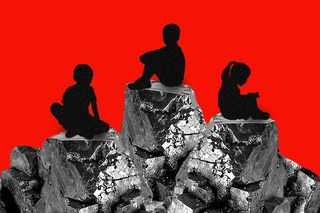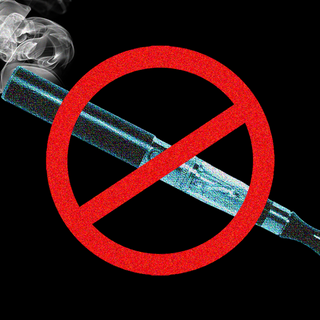
How Social Inequalities Drive Lead Poisoning in Half of India’s Children
Those living close to toxic sites, primarily comprising poor and marginalized populations, suffer greater exposure to lead.

1 in every 3 children in the world are poisoned by lead, stated a 2020 UNICEF and Pure Earth report. This is one of two crucial reports that have highlighted the rising global health burden due to lead poisoning in recent years. The second, a report released by the union government earlier this year, pointed to the massive public health crisis facing India and called for a national mission to effectively tackle lead contamination.
The numbers are staggering—of the 800 million children suffering from lead poisoning, India accounts for over 275 million cases. Half of India’s children are poisoned by lead, DownToEarth reported. A look at the sources of lead exposure, whether occupational or environmental, reveal how socio-economic inequities play a role in increasing exposure of vulnerable populations, particularly women, children and marginalized communities. This makes lead poisoning not only a global health concern but an environmental justice issue too.
Lead poisoning is caused by exposure to lead, a toxic metal, that leads to several adverse health impacts, including affecting the development of the brain and nervous system. Often called a ‘silent killer’, it builds up in the body over time, spreading to the brain, liver, kidneys and bones. It is usually diagnosed by measuring levels of lead in the bloodstream. The high burden of lead poisoning in India, with 23 states exceeding the 5 μg/dl (microgram per deciliter) blood lead level limit, has prompted experts to call for urgent responses, at both the national and state levels.
The effects of lead on children and adults are widespread. Even low-level exposure is associated with decreased IQ levels (of up to 5 points), reduced attention spans, learning problems and possible aggressive and violent behaviors in those who are exposed in childhood. Higher levels of exposure can cause developmental disorders, kidney and heart damage among other conditions. Back in 2020, UNICEF had also found that lead poisoning can reduce India’s GDP by 5%, due to lower economic productivity and reduced lifetime earnings. Altogether, India bears “the world’s greatest health and economic burden” due to this toxic pollutant.
Related on The Swaddle:
‘Worrying’ Levels of Toxic Chemicals Found in Everyday Objects, Places: Study
Social inequalities play a significant role in determining which sections of the population suffer the highest exposure to lead, either due to the occupations they are engaged in or the environment they inhabit. For example, Pure Earth estimated that over 50% of the batteries in India are recycled in the informal sector. Those living close to toxic sites, primarily comprising poor and marginalized populations, suffer greater exposure too. Pure Earth assessed 500 toxic sites in India, finding more than 80% to be contaminated with heavy metals. A majority of these were where unsafe lead-acid battery recycling was taking place.
Moreover, inconspicuous sources of lead exposure make it difficult to track through public health programs. Earlier, leaded petrol was a major source of exposure. While it was slowly phased out, India’s death rate due to lead poisoning continued to rise, charting a 21% increase since 1990 and pointing to other sources that might remain hidden. While some sources today are more obvious, such as lead-acid battery recycling, lead mining and smelting, others could be highly deceptive. Lead has been found in adulterated spices, metallic cookware, cosmetics such as sindoor, bindi and kajal, traditional medicines and even in children’s toys.
The socioeconomic disparity in lead poisoning tracks globally too.A 2018 paper, published in the International Journal of Environmental Research and Public Health, analyzed lead exposure in low and middle-income countries. It highlighted the existence of a large number of hazardous waste sites, where lead is the main toxic pollutant, in seven Asian countries. The researchers found most of these in India, Indonesia and the Philippines.
“The fact that hazardous industrial plants are linked to heightened lead levels means that the projection of an effectively lead-free environment for adults of the future is not likely to hold in the developing world and in advanced economies with powerful growth mandates coupled with weak environmental regulations,” wrote Robert Sampson of Harvard University, in response to a 2022 paper that found half of the US population is exposed to lead in early childhood.
In the US, research has highlighted how lead exposure is exacerbated by “residential segregation, concentrated poverty, discrimination in housing markets, neighborhood disinvestment, and a limited array of options for tenants seeking to remove lead from their environments.” Reports have also pointed to racial disparities in health risks posed by lead contamination.
Related on The Swaddle:
What You Need to Know About the Chemicals We’re Exposed to Every Day and Ingest Without Realizing
Exposure patterns often indicate inequalities in socioeconomic status, gender, culture and education, authors of the 2018 papernoted. They further drew links between lead poisoning and poverty, tying economic insecurities, along with limited social, physical or health protections, with greater exposure to sources of pollution. The researchers further suggested that unequal exposure patterns can also lead to inter-generational poverty due to previous lead exposure, where the cognitive effects of lead pollution may make it difficult for people to rise out of poverty through education or formal employment.
While cases of lead poisoning can be found across the world, it disproportionately affects vulnerable populations in low and middle-income countries. The report by Niti Aayog and Council of Scientific & Industrial Research (CSIR) acknowledged that lead (Pb) poisoning “affects definite groups, mostly pregnant women and children. Notably, children soak up four to five times as much ingested Pb as old people.”
In India, over 2,30,000 people die due to lead exposure, every year. The country accounts for 26% of annual global deaths. The sheer scale of lead poisoning in India recently prompted a gathering of policymakers, researchers and scientists in New Delhi, jointly organized by The Energy and Resources Institute (TERI) and Pure Earth.
“The scale and intensity of lead poisoning in India, particularly among children, is indeed serious and cannot be ignored any longer,” Dr. Rajiv Kumar, Chairman of Pahle India Foundation and former vice chairman, NITI Aayog, said at the meeting.
“There is a desperate need for policy changes at the national and state levels given the severe health implications including, but not limited to, the central nervous, hematopoietic, hepatic and renal systems. But there seems to be little interest here,” Kumar told DownToEarth. The NITI Aayog and CSIR report proposed several steps to address this public health concern, including identifying at-risk populations, investigating sources, training healthcare personnel to detect and treat lead poisoning while also strengthening research in order to identify new sources.
However, the researchers that studied lead exposure in low and middle income countries also pointed out that lead poisoning should not be considered a “disease of the poor”, as it could lead to “othering”, or pushing the problem onto marginalized populations. This would detach the issues from its structural and societal causes, such as polluting industries, hazardous waste sites, economic and job insecurity, instead placing the onus squarely on personal choices and behaviors of those affected.
Ananya Singh is a Senior Staff Writer at TheSwaddle. She has previously worked as a journalist, researcher and copy editor. Her work explores the intersection of environment, gender and health, with a focus on social and climate justice.
Related


Can Anti‑Vaping Ads Help Reduce Vaping, Smoking Habits Among Young People?
